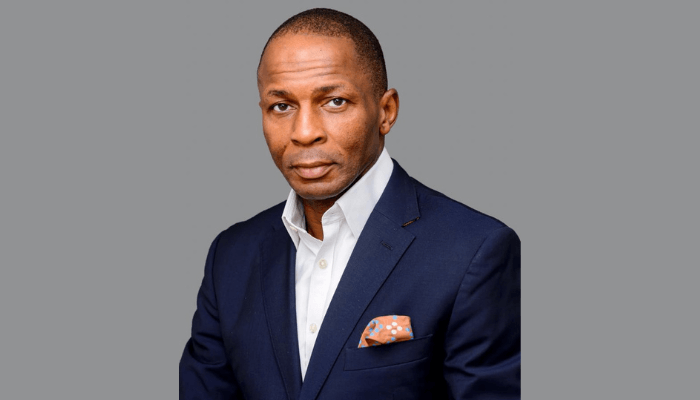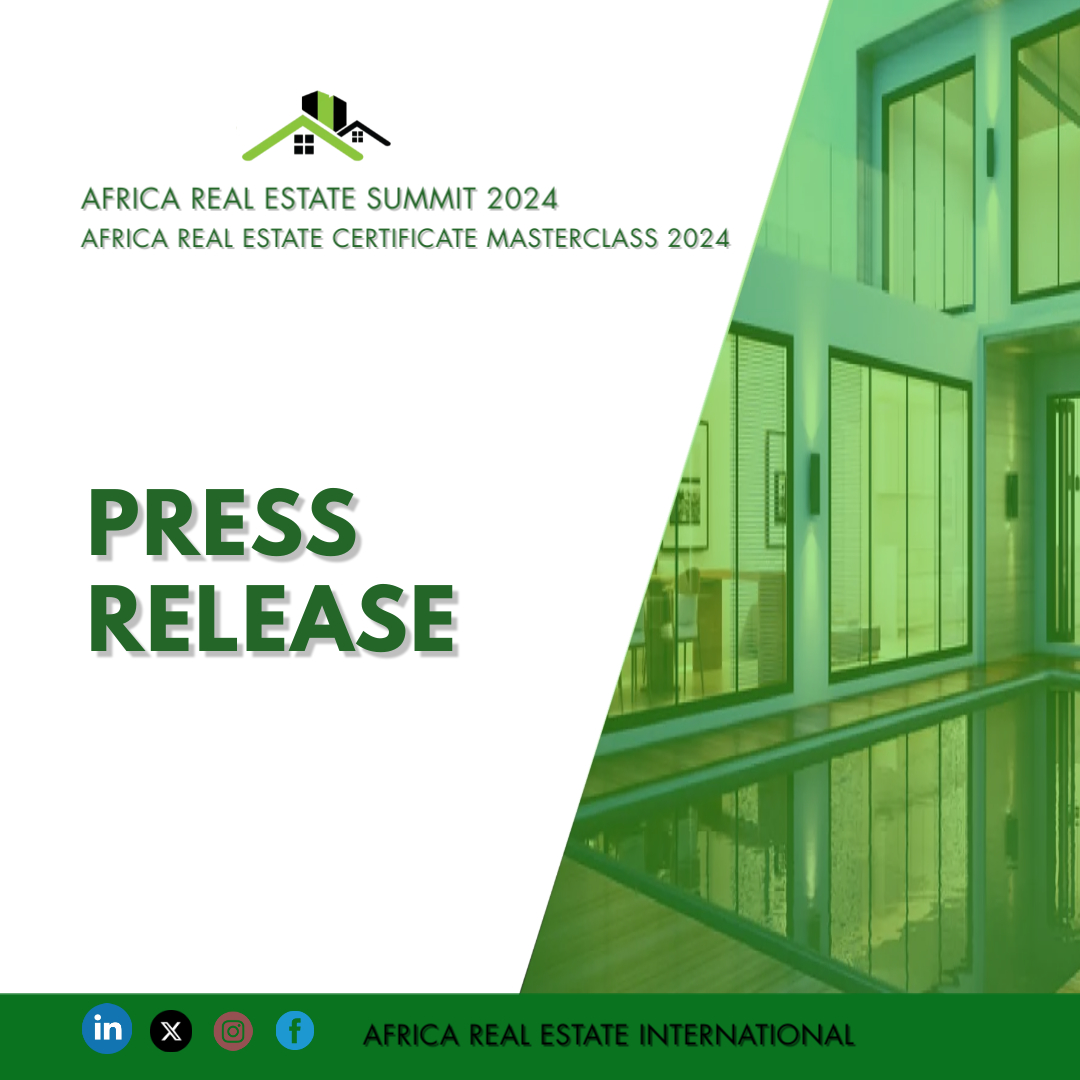For facility teams that no longer want to be seen as glorified maintenance engineers, or responders to emergencies and want to take their facilities programmes to the next level, environmental, social and governance (ESG) provide that opportunity. Many companies and organizations continue to realize that it is no longer acceptable to operate solely off the idea that the bottom line is all that matters. Instead, they are contributing beneficial investments in ESG programmes. ESG initiatives include implementing energy savings projects, selecting products that are produced in a sustainable way, or choosing vendors that share the same mindset. Facility teams that embark on such projects can easily showcase to leadership that they have the skills, talents, capabilities, and drive that goal beyond putting out ‘fires’ in reaction to everyday facilities issues. With ESG opportunities, every facility team can make a big impact on leadership and have a seat at the C-suite table. The idea of ESG is nothing new and can also be termed ‘Corporate Social Responsibility’ (CSR) and sustainability. By integrating ESG principles into the operations, facility managers can proactively identify risks, adopt sustainable practices, and maintain compliance in different areas that will reduce the likelihood of negative consequences and prevent unnecessary emergency activities. With these good ESG practices, teams can develop a strategy that focuses on value through reduced costs, boosted productivity, solid asset management, and sustainable investing. ESG practices can include energy efficiency optimization, improving indoor air quality, providing comfortable and ergonomically sound workspaces, implementing renewable energy solutions, minimizing waste generations and incorporating wellness initiatives. These goals can influence the design, construction, and operations of facilities which can lead to long-term environmental and health and wellness benefits for all end users. The significance of ESG is that facility managers are creating opportunities to engage with stakeholders such as employees, customers, suppliers, and the local communities, to address their concerns and foster positive relationships. These relationships have a serious impact on brand reputation for both the facilities team and organization. Before facility managers start working on their departments’ contribution to the ESG strategy, it’s a great idea to create a team of qualified individuals to identify and evaluate opportunities where the department can shine. Having longevity in mind and being intentional about the efforts put into the process is key. The goal is to have all efforts contribute to the same ambition, including using the facilities team to add value to the organization. Considering ESG in facilities management may seem like an added expense and burden, it makes sense to bear in mind these four key points: communication, advocacy, intentionality, and productivity. Communicating the ESG strategy to stakeholders while demonstrating alignment to current and future business objectives grabs attention. Correlating the ESG work with the organization’s specific goals and metrics shows FM is working towards the same goal. To achieve this, collaborating with whoever to get the correct message across and utilizing the organization’s resources are necessary. With ESG, organizations that make efforts to improve labour conditions, promote diversity, remain environmentally compliant, and give back to the community remain sustainable. In the long term, every organization can benefit from ESG by recording reduced operating costs, improved brand reputation, and access to new markets and investment opportunities. As the organization wins, facility managers win and when they win, facilities teams across the country can continue to create opportunities to showcase their worth.
Process Improvement Within The Facility Mamagement Framework -Tunde Obileye LL.B(Hons) CIWFM
Processes are an integral part of facility management (FM). To that extent, processes and activities are the actions that provide perceptible or tangible benefits to owners, occupants, tenants, guests and those who work in the facility. These processes are expected to be value-add mechanisms to the entire maintenance and management systems. However, in order to continue to achieve the expected or desired result, process improvement is usually required either as the need arises or on a periodic basis. Process improvement may be for the purpose of refining processes and activities that currently add value. This includes simplifying procurement paperwork, simplifying equipment inventory procedure, publishing a new version of the maintenance manual and redesigning inadequate performance standards. On the other hand, it may also be to eliminate wasted resources and effort since the goal of facility management can be defined as managing a facility where people delight in interacting with the built-environment and its contents in an optimally cost-effective manner. Any task, method or operation that does not support this goal can be described as ‘waste’ if they add nothing of value to the facility and its environment. When such wasteful activities are eliminated, money is saved and facility management becomes valued for efficiency and effectiveness. Such waste-elimination activities include scrapping and recreating an outdated safety plan, and rectifying dangerous equipment shutdown procedures. For process improvement to take place, it is advisable to set up a Process Improvement Team (PIT) to identify and investigate problems, find root causes and analyse them, and make improvement to the processes under review. The goal of the team is to effect positive change to the systems that support the work of the facility manager and maintenance team. Ideally, the team should consist of personnel who either have knowledge of the processes in question or whose daily responsibilities are directly or indirectly affected by the issue(s) being examined. They may be selected from different departments or divisions within the organisation. The extent to which process improvement is deemed successful or acceptable will depend on how much results are measured. This is necessary as there may be those who believe that the current processes are working and don’t require to be changed. Others may not think the improvement has made any difference. Whatever the case, the goal of capturing metrics is to demonstrate the positive impact of the process improvement to the overall objective of facility management.Once their recommendations have been made and implemented, the assignment is generally complete and the team may be disbanded.
The Role of FM in Understanding Cybersecurity and Data Protection -Tunde Obileye LL.B(Hons)
In today’s ever-changing world, where technology plays a pivotal role in managing and maintaining facilities, the importance of cyber security and data protection cannot be overstated. Facilities management and building technology continue to evolve significantly with building automation systems becoming integral components of modern facilities and the built environment. These systems offer numerous benefits, from energy efficiency to improved comfort and operational control. However, this increased connectivity also exposes the vulnerabilities of the built environment to threats that could disrupt operations, compromise sensitive data, and potentially endanger the safety of end users. As buildings and other allied facilities become increasingly reliant on technology and interconnected systems, the importance of cyber security and data protection training for facility management and building personnel is crucial. The potential consequences of a cyber attack on a building are severe, ranging from compromised building access information to service disruptions, physical damage, and safety risks. Therefore, facilities managers need to understand the vulnerabilities of these systems and take an active role in protecting them. ISO 27001 is the tool for best practice approach to create an effective management system for information security, cyber security and privacy protection by addressing people, processes and technology. Whether leading or supporting these efforts, facility management professionals are integral to ensuring the safety of people and organizational assets It is crucial to have a strong cyber security and data protection strategy ready so that facilities managers can put it into action when the need arises. Starting with employee education and awareness, facility managers must also be aware of the assets that need to be protected against possible threats or attacks. They must be aware of and build policies and procedures for guarding the assets. Creating, evaluating, and maintaining a robust process is essential, which involves including rules for password protection, handling sensitive data, and using portable devices. These simple but powerful steps have benefitted facilities managers in the past and continue to do so, in the pursuit of developing a solid cybersecurity and data protection mechanism. A detailed risk analysis is highly recommended and may prove to be very beneficial. The steps highlighted below are useful for carrying out risk analysis:• Establish a baseline for network traffic to identify existing gaps and potential security vulnerabilities related to the Operational Technology (OT) and Information Technology (IT) environment.• Examine the asset inventory to identify asset connectivity with networks, and identifying existing gaps and potential security vulnerabilities. Facilities managers are getting more aware of the danger in their OT environment and understand the importance of strengthening their cyber security framework. The awareness comes from the need to reduce to the barest minimum the cyber security risk as OT and IT systems continue to converge. Cyber security and data protection in the digital age has become more paramount than ever, and the built environment is no exception to this. In concluding, facilities managers, along with experts from both IT and OT, are collaborating in developing and managing effective cyber security policies and procedures to improve the overall facility cybersecurity framework as more internet-connected devices become part of daily facility operations. Stakeholders are aware that unprotected systems become alluring targets as systems get more complicated and have more complex associated risks. Facilities managers are thus embracing evolving technology to become cyber security-ready to handle evolving digital security risks.
MAINTAINING THE DRIVE FOR A SUSTAINABLE FUTURE IN FACILITY MANAGEMENT -Tunde Obileye LL.B(Hons) CIWFM
Sustainability is one of the most frequently heard buzzwords when our future development is brought to the fore, regardless of whether it is about the future of our society, businesses, nature or the planet itself. Even though the word “sustainability” has become somewhat trendy and its usage has increased in recent years, its concept is not new. The concept of sustainability first appeared in the 1987 Brundtland report produced for the UN. Understanding what it really means, understanding our relationship with nature and why we need to become more sustainable is one of the most crucial situations facing the world today. It should come as no surprise that this topic concerns everyone including the biggest global corporations.Sustainability is a complex concept that has attracted different definitions however one point is clear, it is not a trend but a concept that is bringing profound change in the social, economic and environmental aspects of our daily lives. With the changing outlook towards sustainability, business leaders continue to face the real challenge of securing the bottom line of their organizations, ensuring the welfare of their employees, and the planet such as adoption of greener technologies, conserving energy and reducing pollution which leads to better living environment and public health. While many companies talk the talk of sustainability, claiming to be integrating environmental and societal concerns into their business models, a far fewer number of them actually walk the walk. Sustainability is typically treated by most managers as someone else’s problem and relegated to a department or even a single individual. Therefore, facilities managers or FM practitioners ought to play their part in how best to successfully support their organizations in transforming the corporate business models as a catalyst for a new way of understanding the long-term sustainable vision and seeking a balance between the social, economic and environmental targets. As key players in the workplace and facilities management space, facilities managers should introduce sustainable practices in the day-to-day maintenance activities as well as putting together a strategic plan. This will include conscious actions such as cutting down excess energy usage and switching to sustainable sources such as wind, hydropower and solar. Another focus area for the strategic plan will be waste management. Generally, the way we dispose of waste is troubling. The goal of sustainable waste management is to reduce the number of natural resources consumed, reuse the materials taken from nature as much as possible and create as minimal waste as possible. For sustainability progress to be maintained, the following recommendations are provided for facilities managers to consider as part of the organizational model and culture. Establish purpose-based values on sustainability.Include sustainability as part of corporate strategy.Train employees and incentivize actions that advance sustainability.Create a sustainability culture in your organization.Conduct business with sustainability in mind. Small actions make a big difference, if facilities managers encourage all employees do what they can in their own spheres of influence, impact will take place.
MAINTAINING THE DRIVE FOR A SUSTAINABLE FUTURE IN FACILITY MANAGEMENT -Tunde Obileye LL.B(Hons) CIWFM
Sustainability is one of the most frequently heard buzzwords when our future development is brought to the fore, regardless of whether it is about the future of our society, businesses, nature or the planet itself. Even though the word “sustainability” has become somewhat trendy and its usage has increased in recent years, its concept is not new. The concept of sustainability first appeared in the 1987 Brundtland report produced for the UN. Understanding what it really means, understanding our relationship with nature and why we need to become more sustainable is one of the most crucial situations facing the world today. It should come as no surprise that this topic concerns everyone including the biggest global corporations.Sustainability is a complex concept that has attracted different definitions however one point is clear, it is not a trend but a concept that is bringing profound change in the social, economic and environmental aspects of our daily lives. With the changing outlook towards sustainability, business leaders continue to face the real challenge of securing the bottom line of their organizations, ensuring the welfare of their employees, and the planet such as adoption of greener technologies, conserving energy and reducing pollution which leads to better living environment and public health. While many companies talk the talk of sustainability, claiming to be integrating environmental and societal concerns into their business models, a far fewer number of them actually walk the walk. Sustainability is typically treated by most managers as someone else’s problem and relegated to a department or even a single individual. Therefore, facilities managers or FM practitioners ought to play their part in how best to successfully support their organizations in transforming the corporate business models as a catalyst for a new way of understanding the long-term sustainable vision and seeking a balance between the social, economic and environmental targets. As key players in the workplace and facilities management space, facilities managers should introduce sustainable practices in the day-to-day maintenance activities as well as putting together a strategic plan. This will include conscious actions such as cutting down excess energy usage and switching to sustainable sources such as wind, hydropower and solar. Another focus area for the strategic plan will be waste management. Generally, the way we dispose of waste is troubling. The goal of sustainable waste management is to reduce the number of natural resources consumed, reuse the materials taken from nature as much as possible and create as minimal waste as possible. For sustainability progress to be maintained, the following recommendations are provided for facilities managers to consider as part of the organizational model and culture.Establish purpose-based values on sustainability.Include sustainability as part of corporate strategy.Train employees and incentivize actions that advance sustainability.Create a sustainability culture in your organization.Conduct business with sustainability in mind. Small actions make a big difference, if facilities managers encourage all employees do what they can in their own spheres of influence, impact will take place.
Kenya, Nairobi to host Africa Real Estate Summit and Africa Real Estate Certificate Masterclass in 2024
Enhancing Sustainable Real Estate Development in Africa announced as 2024 Theme We are excited to announce that two of our products: The annual Pan Africa Real Estate Summit and Africa Real Estate Certificate Masterclass will be held June 2024 in Nairobi, Kenya – East Africa after 3 successful summit and masterclass in West African cities -Abuja, Accra, and Lagos. These events are expected to bring together experts and stakeholders from the real estate industry in the continent to share experiences, showcase innovations, and discuss investment opportunities. The both events scheduled for June 2024, will incorporate a wide range of activities including keynote addresses, masterclass, interactive panel discussions, exhibitions, award recognition, and networking sessions. It will also provide a platform for investors, developers, policymakers, architects, and other key players in the real estate landscape to learn and engage in meaningful dialogue about the industry’s future. “We are excited to host two of our programs: The Africa Real Estate Summit and Africa Real Estate Certificate Masterclass in Nairobi in 2024”, said Mr. Onwuka Onyeka, the Founder of A.R.E. International Ltd. “These events are an important milestone as we continue to grow the real estate sector in Africa. We anticipate the ARESummit and Masterclass will positively impact the industry, creating valuable partnerships, and new investment opportunities.” The events will cover key themes such as sustainability, affordability, technology, and innovation in real estate. Participants will engage with experts in different sectors of the industry through in-depth discussions, interactive workshops, and keynote presentations. During the events, attendees will also have the opportunity to explore Nairobi, a vibrant hub of innovation and growth. They will experience first-hand the city’s rich culture and heritage, which continues to attract investors and tourists from across the world. “We know that the success of this event will come from the participation of key stakeholders in the industry”, said Mr. Onwuka. “We invite stakeholders from all parts of the industry to join us in Nairobi in 2024 to engage in relevant conversations, share experiences, and collaborate to unlock the potential of the real estate sector in Africa.” Participants can pre-register here ARESummit2024.eventbrite.com for more information. For partnership and travel packages available to international participants, please visit www.africarealestatesummit.org. For Kenyan nationals, kindly contact our country representative, Christopher Alvin Mokaya on +254 711 123 456 or send a mail at info@africarealestatesummit.org Follow event updates on socials: Like Africa Real Estate Certificate Masterclass on Facebook Follow Africa Real Estate Masterclass on Instagram Like Africa Real Estate Summit on Facebook Follow Africa Real Estate Summit on Instagram Follow Africa Real Estate on LinkedIn
PRESS RELEASE
Africa Real Estate International Ltd Brings Innovative Real Estate Solutions to African Market with New Agency Launch” Africa Real Estate International Ltd, a cutting-edge real estate company, officially launches her Agency today. Africa Real Estate International Agency (AREIA) is a real estate agency that aims to provide top-notch real estate services to clients in Africa. AREIA will operate in multiple African countries, including Nigeria, Ghana, Kenya, and South Africa. Our business model will focus on providing a comprehensive range of real estate services, including property sales, leasing, property management, and investment advisory services. AREIA has built a team of highly experienced and professional real estate agents who possess an in-depth knowledge of the African real estate market and who have extensive experience dealing with the unique challenges of this market. Speaking about the launch, the CEO of Africa Real Estate International Ltd, Onwuka M. Onyeka, said, “We are thrilled to be launching Africa Real Estate International Agency today. Our vision is to be the go-to real estate agency for clients looking to invest in or sell property in Africa. We are passionate about providing world-class service to our clients and are confident that we have the team and technology in place to make this a reality.” AREIA will leverage networks, technology, and digital marketing strategies to reach a wider audience and streamline our operations. For more information, visit us at www.africarealestateinternational.comEmail: agency@africarealestateinternational.com Call/WhatsApp Customer Support +234 915 099 9340 Follow us on socials: Twitter @AREInternationFacebook: Africa Real Estate InternationalIG: Africa Real Estate InternationalYoutube.com/@africarealestateinternationalhttps://www.linkedin.com/Africaealestateinternational



